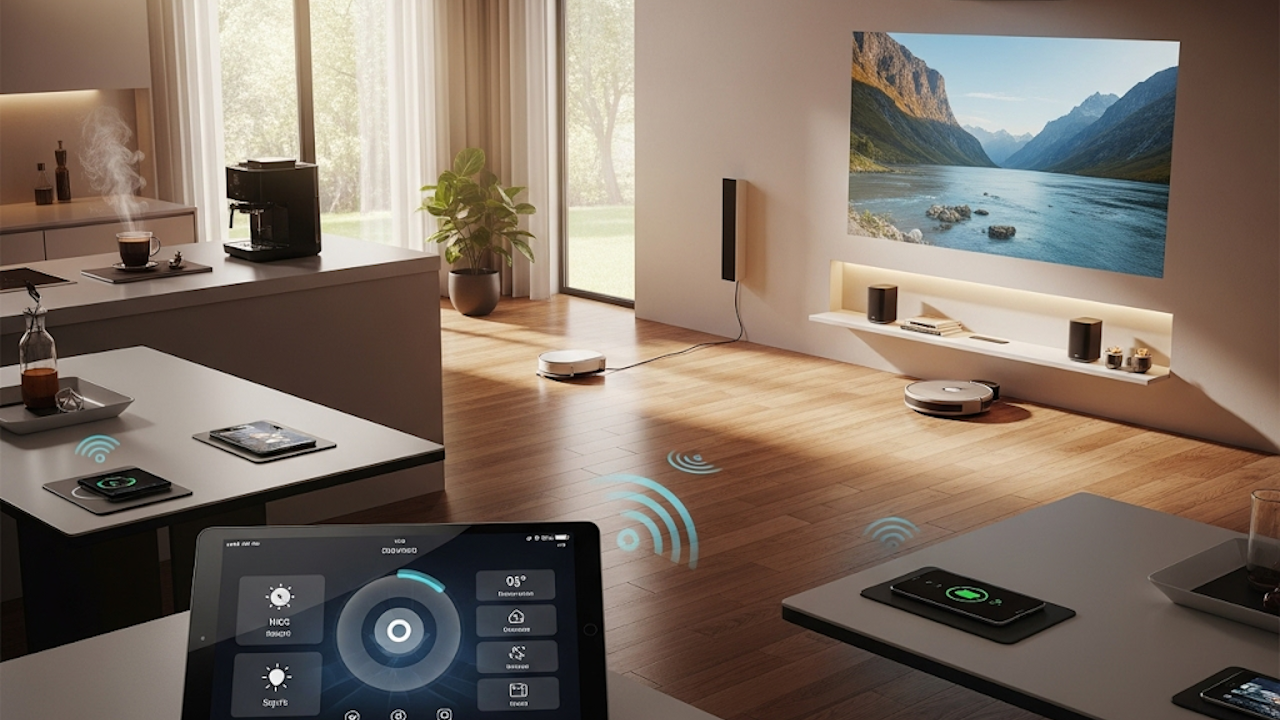In the past, the idea of a home that could anticipate your needs and respond to your commands seemed like science fiction. Today, smart homes are no longer futuristic fantasies. They are practical realities that use interconnected devices, sensors, and artificial intelligence to create a living space that is efficient, comfortable, and secure. The concept of effortless living through smart technology is transforming how people interact with their homes, offering convenience while also improving energy efficiency and safety.
What Makes a Home Smart?
A smart home integrates technology into the very fabric of daily life. Devices such as smart thermostats, lighting systems, security cameras, and voice assistants connect through Wi-Fi or other networks, allowing them to communicate with each other. These devices can be managed through smartphones, tablets, or voice commands, giving homeowners more control over their environment.
For example, a smart thermostat learns your daily routine and adjusts the temperature automatically. Smart lighting can be programmed to mimic natural daylight patterns or respond to motion sensors. Even appliances such as refrigerators can now track grocery usage and suggest shopping lists. The goal is to make living more seamless by reducing the number of small decisions and manual tasks people face every day.
Convenience and Efficiency
One of the most appealing aspects of smart homes is the convenience they provide. With a single voice command, you can dim the lights, play music, or lock the doors. Homeowners no longer need to get up to adjust the thermostat or check if the garage door is closed. These tasks can be automated or controlled remotely from anywhere in the world.
Smart technology also brings efficiency. Energy use is one area where the impact is especially clear. Smart thermostats and lighting systems minimize waste by optimizing when and how much energy is used. Appliances can be scheduled to run during off-peak hours when electricity is cheaper. Over time, these efficiencies can lead to significant cost savings while also reducing the environmental footprint of a household.
Security and Peace of Mind
Security has always been a top concern for homeowners, and smart technology offers solutions that were once impossible. Smart doorbells with video cameras allow you to see and speak to visitors from your phone. Motion-activated security cameras provide real-time alerts and cloud storage of video footage. Smart locks let you grant access to trusted friends or service providers without needing to hand out spare keys.
These systems provide peace of mind, especially when homeowners are away. A quick glance at an app can confirm that doors are locked and alarms are armed. Some systems can even simulate human activity by turning lights on and off, giving the impression that someone is home.
Health and Comfort
Smart homes are also designed to improve comfort and even personal health. Air quality monitors can detect pollutants, allergens, or excessive humidity, prompting connected air purifiers or dehumidifiers to take action. Smart mattresses can track sleep patterns and adjust firmness or temperature for optimal rest. Voice assistants can remind you to take medications or encourage daily wellness routines.
The ability to customize a living environment goes beyond comfort. For individuals with disabilities or mobility challenges, smart homes can be life-changing. Voice commands or automated routines can help manage tasks that would otherwise require physical effort, supporting greater independence and quality of life.
Entertainment and Lifestyle
Beyond practical benefits, smart homes enhance entertainment and lifestyle. Multi-room audio systems allow music to follow you from room to room. Smart TVs and streaming devices can recommend shows based on your viewing habits. Even kitchen technology has become smarter, with ovens that suggest recipes, monitor cooking times, and alert you when dinner is ready.
The integration of these technologies creates an immersive lifestyle where the boundaries between work, relaxation, and entertainment blend seamlessly. As more devices become interconnected, the home evolves into an ecosystem designed to suit personal preferences.
The Role of Artificial Intelligence
Artificial intelligence (AI) plays a critical role in making smart homes effortless. AI helps devices learn from user behavior and anticipate needs. Instead of simply responding to commands, smart systems can suggest actions or even act autonomously. For example, if you usually lower the thermostat before bedtime, the system will eventually do this automatically. If lights are often left on, the system can turn them off when it detects no activity in the room.
The more a smart home learns, the more intuitive and personalized it becomes. AI creates an environment that adapts to the rhythms of daily life, reducing the need for constant input from homeowners.
Challenges and Considerations
While smart homes offer many benefits, they are not without challenges. Privacy and security are major concerns since these devices collect and transmit large amounts of data. Strong cybersecurity measures are essential to prevent hacking or misuse of personal information. Compatibility between devices is another challenge, as not all products work seamlessly together.
Cost is also a factor. Outfitting a home with smart technology requires investment, although prices are decreasing as the market grows. Homeowners should weigh the benefits of convenience and efficiency against the initial expense.
The Future of Effortless Living
As technology continues to evolve, smart homes will become even more advanced. The rise of 5G networks, improved AI, and more affordable devices will push adoption further. In the near future, homes may be able to predict needs with even greater accuracy, from preheating the oven based on your calendar events to automatically reordering groceries when supplies run low.
The ultimate vision for smart homes is to create an environment that feels almost invisible in its operation. Tasks that once required conscious effort will be handled quietly in the background, allowing people to focus on what matters most.

